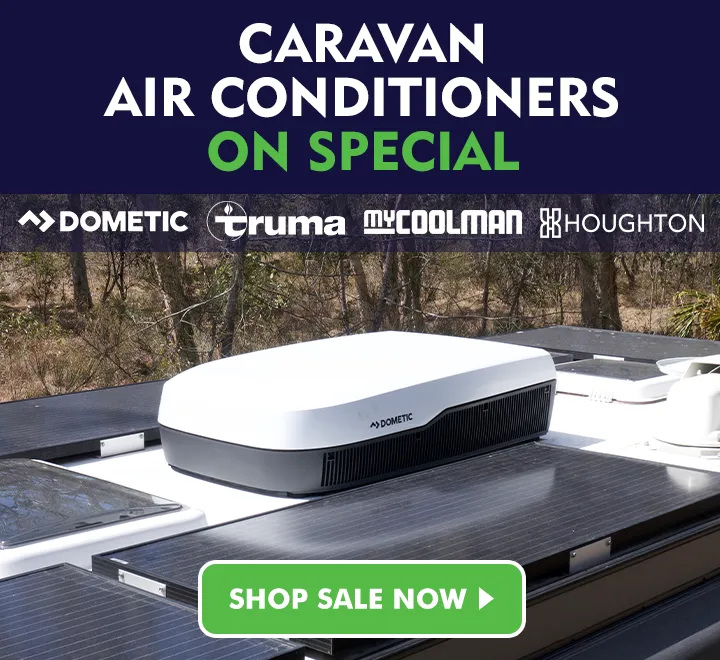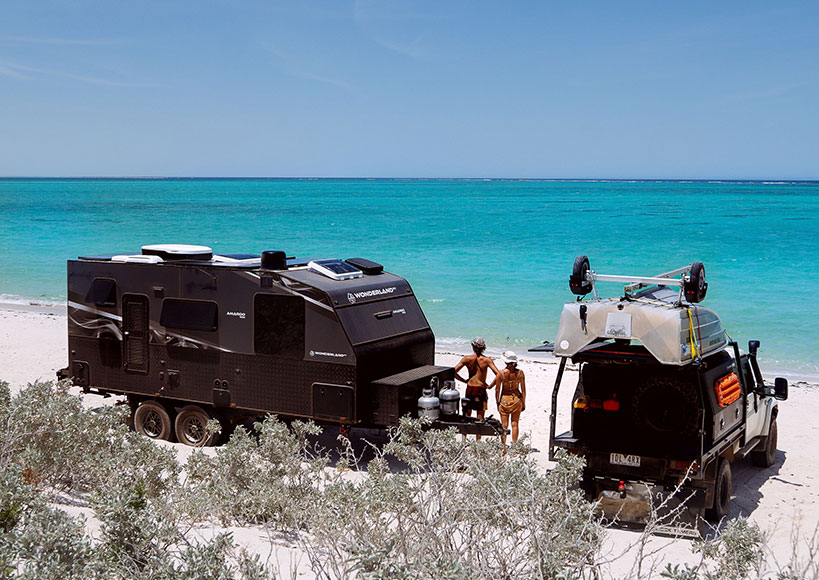You’re lounging in an armchair and enjoying the hot, summer sun when suddenly you feel a tickle in your throat. Starting to feel the sensation of thirst begin to form in your mouth, you stand to go get a glass of water. Upon reaching your caravan’s sink, you turn the handle and are surprised to find that absolutely nothing comes out. You, my friend, have forgotten to purchase a caravan water tank.
Although a caravan water tank may seem like a pretty basic accessory, the current market models do vary on a few factors which should be considered upon purchasing.
Here are the most important:
Choosing the Right Water Tank Size?
Although it’s pretty obvious that a larger water tank will hold more water, some anxious campers gloss over how their water tank size will dictate their camping experience. Here are a few things to think about:
Short or Long Trips?
On longer camping trips, a larger water tank would be a better choice than a small one. On shorter trips, a smaller tank may be adequate.
Off-Grid or Local?
If you’re interested in off-the-grid, secluded camping, then a larger water tank would likely be ideal. Larger water tanks, however, are heavier and bigger than their smaller-sized counterparts and often require a larger mounting area, important considerations for weight distribution and installation. Campers who enjoy frequenting parks featuring water hookups are usually okay with a smaller tank because it’s easier for them to refill with an easily accessible water source nearby.
Number of People?
A single camper will likely require much less water than a full-sized family with children. The number of people who camp with you will affect the size of the water tank you need.
To help give you a better idea:
-
A 25L water tank can usually last 2 people approximately 2 days (5 days for 1 person).
-
A 40L tank can usually last a 4 people for approximately 2 days (7 days for 1 person)
-
Anything over 30L will accommodate extended caravan trips, with over 100L being able to provide for 2 people for almost 2 full weeks.
NOTE: Each litre of water will add 1kg to your caravan’s weight. If adding numerous large tanks, be sure to disperse them evenly underneath the vehicle to keep the caravan from becoming unbalanced.
.png)
What Material Should You Choose?
Most caravan water tanks are manufactured using one of the following materials:
• Polyethylene plastic
• Galvanised Steel
• PVC and Nylon
Polyethylene, with its light weight and impressive flexibility, is one of the most commonly-used water tank materials. These tanks are 100% food-grade approved and their light weight makes them ideal for use on smaller caravans with flimsier walls.
Galvanised steel water tanks weigh much more than polyethylene models but are much easier to repair if damaged. Because these tanks are resilient to corrosion, they are perfect for campers who often find themselves in wetter environments or near water.
PVC and nylon water tanks are soft-sided, bladder system tanks. Although the polyethylene and steel tanks are generally considered more durable, PVC and nylon present a convenient and easily portable option.
.jpg)
How to Install a Caravan Water Tank:
When installing a water tank under your caravan consider where your plumbing fittings are located and avoid placing the tank near exhaust pipes or moving parts. Make sure to check your clearance to avoid hitting any obstacles.
Installing your caravan water tank usually requires mounting brackets and three fittings as follows:
-
Inlet (for incoming water): Use a food grade water hose to fill your tank. Your Family will thank you! Fill your tank gradually, allowing air to escape and preventing the tank from pressure build-up. This is where a breather comes in handy.
-
Breather: A breather will help prevent Airlock. This will make the tank appear full when it is not. Position the end of your breather hose higher than the water inlet point to allow the whole system to breathe.
-
Outlet: Outlets can be connected directly to a manual pump, a gravity fed tap, or an automatic pressure pump to access the water stored in the tank.
Maintenance Tips for Caravan Water Tanks:
Keeping your water supply clean is the first step when it comes to maintaining a safe and reliable water system. Especially after those long outback journeys when all that red dirt finds its way into everything.
-
Food Grade Hoses: Never fill or clean your water tank with a garden hose. This will prevent your water from tasting or smelling like plastic. This taste can remain in your water tank even after you have drained it. Always use a hose designed for drinking water.
-
Cleaning: Clean your freshwater tank using a cleaning agent such as the Camec Tank Clean. This product is great for removing any bacteria, mould, or even algae. Don't store water in a dirty tank. It's a good idea to freshen up your tank after it's been in storage before a trip.
-
Filters: Water filters will improve the quality of water and provide that extra peace of mind that your water is safe to drink. The B.E.S.T Water filter is a great choice and can be installed under the bench to connect to a specific drinking tap. They are super easy to clean and install and have a life of 5,000 litters.
If you need assistance finding the right caravan water tank for you and your set up, feel free to contact our friendly team on 1800 787 278 for expert advice and recommendations, or explore our full range of caravan water tanks here.
DISCLAIMER* Please note, this advice is general in nature and we strongly recommend consulting the product manual and where relevant, a professional installer.








